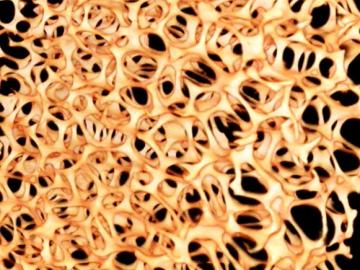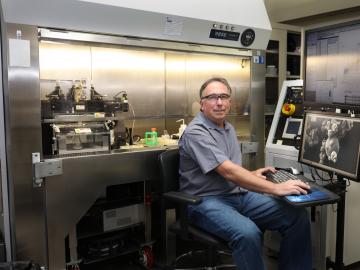
Filter News
Area of Research
- (-) Clean Energy (60)
- (-) Nuclear Science and Technology (11)
- (-) Supercomputing (31)
- Advanced Manufacturing (6)
- Biological Systems (1)
- Biology and Environment (4)
- Building Technologies (1)
- Climate and Environmental Systems (2)
- Computational Engineering (1)
- Computer Science (8)
- Fusion Energy (6)
- Materials (55)
- National Security (5)
- Neutron Science (23)
- Quantum information Science (3)
- Transportation Systems (1)
News Topics
- 3-D Printing/Advanced Manufacturing (12)
- Advanced Reactors (4)
- Artificial Intelligence (7)
- Big Data (4)
- Bioenergy (7)
- Biomedical (3)
- Biotechnology (1)
- Clean Water (4)
- Composites (2)
- Computer Science (26)
- Cybersecurity (2)
- Energy Storage (5)
- Environment (12)
- Exascale Computing (2)
- Frontier (2)
- Fusion (1)
- Grid (3)
- Machine Learning (1)
- Materials Science (6)
- Mercury (1)
- Microscopy (1)
- Nanotechnology (2)
- Neutron Science (2)
- Nuclear Energy (11)
- Physics (1)
- Polymers (1)
- Quantum Science (4)
- Security (2)
- Space Exploration (4)
- Summit (9)
- Sustainable Energy (8)
- Transportation (10)
Media Contacts

In the vast frozen whiteness of the central Arctic, the Polarstern, a German research vessel, has settled into the ice for a yearlong float.

A joint research team from Google Inc., NASA Ames Research Center, and the Department of Energy’s Oak Ridge National Laboratory has demonstrated that a quantum computer can outperform a classical computer

Jason Nattress, an Alvin M. Weinberg Fellow at the Department of Energy’s Oak Ridge National Laboratory, found his calling on a nuclear submarine.

ORNL and The University of Toledo have entered into a memorandum of understanding for collaborative research.

The type of vehicle that will carry people to the Red Planet is shaping up to be “like a two-story house you’re trying to land on another planet.

Researchers at Oak Ridge National Laboratory demonstrated that metal foam enhances the evaporation process in thermal conversion systems and enables the development of compact HVAC&R units.

Researchers at Oak Ridge National Laboratory will present eight innovative technologies currently available for commercialization during a public event at ORNL on October 17.

Using the Titan supercomputer and the Spallation Neutron Source at the Department of Energy’s Oak Ridge National Laboratory, scientists have created the most accurate 3D model yet of an intrinsically disordered protein, revealing the ensemble of its atomic-level structures.

Scientists at the U.S. Department of Energy’s Oak Ridge National Laboratory have demonstrated a way to isolate and grow targeted bacteria using genomic data, making strides toward resolving the grand challenge of uncultivated microbial “dark matter” in which the vast majority of microorganisms remain unstudied in the laboratory.

Processes like manufacturing aircraft parts, analyzing data from doctors’ notes and identifying national security threats may seem unrelated, but at the U.S. Department of Energy’s Oak Ridge National Laboratory, artificial intelligence is improving all of these tasks.


